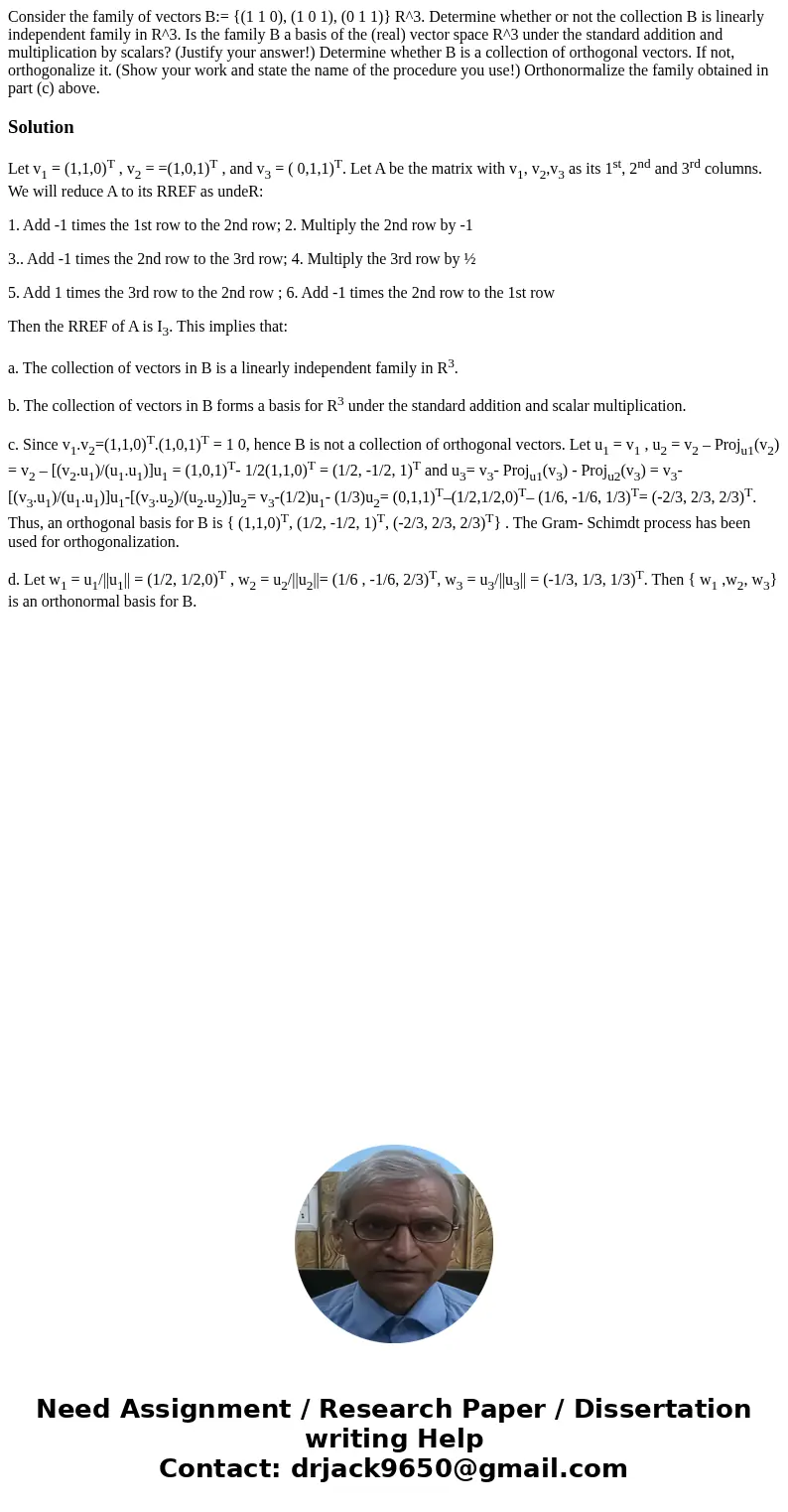Consider the family of vectors B 1 1 0 1 0 1 0 1 1 R3 Determ
Solution
Let v1 = (1,1,0)T , v2 = =(1,0,1)T , and v3 = ( 0,1,1)T. Let A be the matrix with v1, v2,v3 as its 1st, 2nd and 3rd columns. We will reduce A to its RREF as undeR:
1. Add -1 times the 1st row to the 2nd row; 2. Multiply the 2nd row by -1
3.. Add -1 times the 2nd row to the 3rd row; 4. Multiply the 3rd row by ½
5. Add 1 times the 3rd row to the 2nd row ; 6. Add -1 times the 2nd row to the 1st row
Then the RREF of A is I3. This implies that:
a. The collection of vectors in B is a linearly independent family in R3.
b. The collection of vectors in B forms a basis for R3 under the standard addition and scalar multiplication.
c. Since v1.v2=(1,1,0)T.(1,0,1)T = 1 0, hence B is not a collection of orthogonal vectors. Let u1 = v1 , u2 = v2 – Proju1(v2) = v2 – [(v2.u1)/(u1.u1)]u1 = (1,0,1)T- 1/2(1,1,0)T = (1/2, -1/2, 1)T and u3= v3- Proju1(v3) - Proju2(v3) = v3-[(v3.u1)/(u1.u1)]u1-[(v3.u2)/(u2.u2)]u2= v3-(1/2)u1- (1/3)u2= (0,1,1)T–(1/2,1/2,0)T– (1/6, -1/6, 1/3)T= (-2/3, 2/3, 2/3)T. Thus, an orthogonal basis for B is { (1,1,0)T, (1/2, -1/2, 1)T, (-2/3, 2/3, 2/3)T} . The Gram- Schimdt process has been used for orthogonalization.
d. Let w1 = u1/||u1|| = (1/2, 1/2,0)T , w2 = u2/||u2||= (1/6 , -1/6, 2/3)T, w3 = u3/||u3|| = (-1/3, 1/3, 1/3)T. Then { w1 ,w2, w3} is an orthonormal basis for B.

 Homework Sourse
Homework Sourse